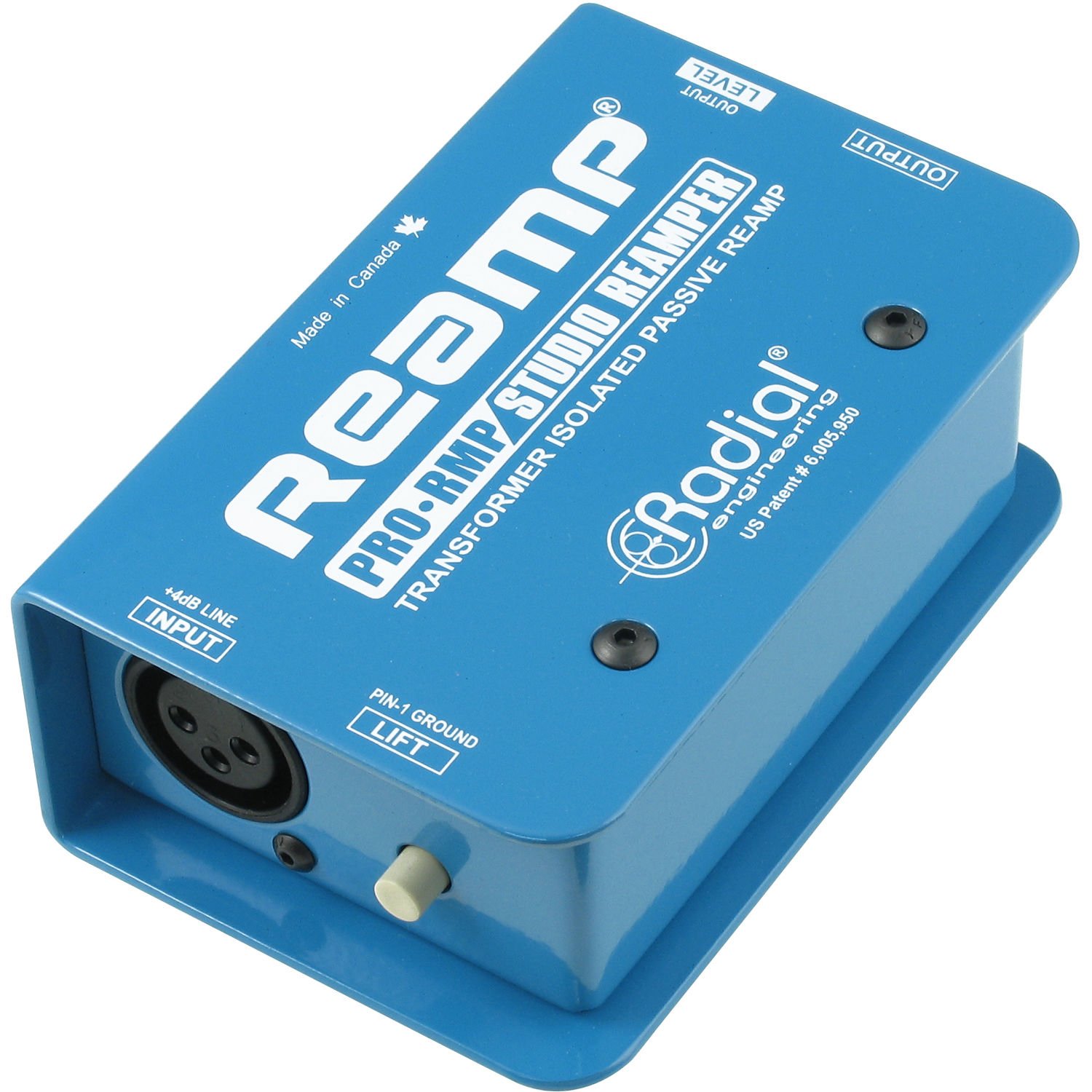

A DI converts an unbalanced instrument level signal to a balanced mic level signal. Unless your device is a 2-in-1, you’ll need both a DI and a reamp box to properly perform the reamping technique. The flexibility that reamping offers is amazing. Run the signal through different amps, different effects, make as many microphone adjustments as you want, and more. Step 3: With your DAW sending the DI-ed guitar signal to a reamp box, you can start experimenting.The microphone you put on the speaker gets the signal back to the DAW for recording. Then run another cable from the reamp box to a guitar amp. Step 2: Send the clean signal in your DAW through an output on your interface to a reamp box.You can record both the dry signal as well as the amp signal at the same time. Plug the guitar straight into the DI, send the Thru to an amp so the player can have the sound and feel they’re comfortable with, and take the Out to your interface. Step 1: Capture a clean signal signal from the guitar using a DI box (some reamp boxes are 2-in-1 with a DI included).Once you have all the takes you need, you can send the guitarist home! The fun begins when you can take their DI signals and run them through your collection of amps, effects, and mics. Record the performances with a scratch tone the artist is familiar and comfortable with, and get the sound right for the mix later. That means you’ll need to get up and running fast to capture the best takes.īut what if you didn’t get the ton dialed in all the way? That’s where reamping comes in. Usually a musician delivers their best performances early in a session, while they’re still fresh and not fatigued after 10 hours in the studio. First and foremost, you have to put yourself in the guitarist’s shoes. To put it simply, reamping is a process in which you record a clean DI, and then send the clean track through your amps, effects, and mics for re-recording. A reamp box is a specially designed device that allows you to send a clean guitar signal from your DAW to an amplifier, letting you tweak tones on the fly using a pre-recorded signal. It was weird when I first got it though - had the interface at a "normal" output level and the knob on the X Amp cranked and it was about half the output of the actual guitar.Reamping takes place in two stages during both the recording and mixing phases. I had to make it up at the interface level with my Apogee duet - found a balance between the output knob on the X amp and the duet that works. It's passive and has a VERY adjustable level control so it works great with passive or active pickups.best of all, it's only 125 bucks.Īgree definitely with the output of the X amp.

I recently got the palmer Daccapo and I can say hands down its the best most transparent reamp box I've used. The only radial reamp device I'd recommend is the newer radial reamp box (radial bought the rights to cuniberti's original reamp).but I don't know if they modified it at all.
#Active or passive reamp box mod
You can mod the prormp since it's passive but you can't mod the X amp.I had my x amp for 5 years and it was OK but I was never completely satisfied. I owned an X amp and it's a known issue that the radial x amp and the prormp have REALLY low output, and depending on your interface and active or passive pickups, you can't always recover that lost gain.


 0 kommentar(er)
0 kommentar(er)
